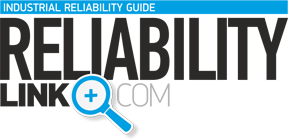Industrial Maintenance
Total Productive Maintenance (TPM) – “You Cannot Live Without it”

Written by : Ricky Smith, CMRP, CPMM, CRL
TPM is a company-wide equipment maintenance system involving all employees–from top management to production line workers and the building custodians. It is but one of many approaches to maintenance. The word “total” in Total Productive Maintenance is common to:
- Total Equipment Effectiveness in pursuit of profitability, not simply maintenance cost reduction.
- Total Maintenance System including Maintenance Prevention (MP), Maintainability Improvement (MI), and good old-fashioned Preventive Maintenance (PM) is a maintenance plan for the equipment’s entire life span. MP translates into maintenance-free design and is pursued during the equipment design stage. MI translates into repairing or modifying equipment to prevent breakdown and to facilitate ease of maintenance.
- Total Participation of all employees.
The idea behind TPM is not revolutionary. Simply stated, it is cooperation to get the important job of maintenance done reliably and effectively! It is supplementary to, rather than a replacement of, established principles of successful maintenance management. Built around five focal points, TPM combines concepts of continual improvement, total quality, and employee involvement:
- Activities to optimize overall equipment effectiveness.
- Elimination of failures through a thorough system of maintenance throughout the equipment’s entire life span.
- Autonomous operator maintenance (this does not imply that operators perform all maintenance).
- Use lower-skilled personnel to perform routine jobs that do not require skilled technicians.
- Use operators to perform specific routine maintenance tasks on their equipment.
- Use operators to assist technicians in the repair of equipment when it is down.
- Use computerized technology enabling operators to calibrate selected instrumentation.
- Use technicians to assist operators during shutdown and start-up.
- Day-to-day maintenance activities involving the total work-force (engineering, operations, custodians, maintenance, and management).
- Company-directed and motivated, yet autonomous small group activities. Small group goals to coincide with company goals.
Continuous training
Formal
OJT – On Job Training
One-point lessons
Team members train each other
TPM Organization
Operators and technicians are organized into zone teams.
They are trained and certified to perform particular tasks in their zone as the need arises.
- One Point Lessons (1 Per Week)
- Higher levels of maintenance by operators are usually voluntary.
- Individuals who spot problems pitch in to restore equipment—resulting in less downtime.
- Major maintenance work, requiring high craft skills is performed by centralized (or less centralized) maintenance forces.
TPM Objectives
While the dual goals of TPM are zero breakdowns and zero defects, TPM is more about performance improvement, employee interaction, and positive reinforcement than it is about maintenance specific technology. Human resource factors and technical factors must be balanced.
TPM works toward elimination of six formidable obstacles to equipment effectiveness:
- Downtime
- Equipment failure—from breakdown
- Setup and adjustment
- Speed Losses
- Idling and minor stoppages—due to abnormal operation of sensors, blockages of chutes, etc.
• Reduced speed—due to discrepancies between designed and actual speed of equipment. - Other defects should be counted as well:
• Defects
• Process defects—scrap, downgrades, rejects, returns, etc.
• Reduced yields—from all resources such as raw materials, packaging, energy, labor, etc.
Autonomous Maintenance (AM)
Group activities are promoted throughout the organization to gain greater equipment effectiveness. Operators are trained to share with maintenance personnel the responsibility for routine maintenance. This is referred to as “autonomous maintenance.”
Routine maintenance normally includes:
- Housekeeping
- Equipment cleaning
- Protection of components from dirt
- Lubrication by operators
- Equipment inspection by operators and by maintenance
- Set ups and adjustments
Autonomous Maintenance may or may not include minor equipment repairs. You decide how autonomous maintenance is to be. Operators must receive a large amount of skills training and are certified as they progress through various skill levels. As operators become trained, an organized transfer of tasks takes place.
Equipment Management (EM)
The second focus of TPM is on equipment management – not simply on maintenance. EM is pursued through autonomous small group (team) activity comprised of operators, engineers, and technicians. Equipment improvement never stops!
The aim of team efforts is to optimize overall equipment effectiveness and eliminate breakdowns through a thorough system of maintenance throughout equipment’s entire life span.
Through involvement, operators develop ownership of and an affinity for “their equipment.” Team members involved in problem solving develop a strong urge to see the problem fixed. They therefore participate in equipment management activities to make sure the problem does not recur. They take pride in their accomplishments.
The organization trains, solves problems, and works as teams. Peer support is important. Team competition is healthy and encouraged.
TPM Integration
The TPM approach does not preclude need of an integrated maintenance program including computerized support, formalized planning and scheduling, and insightful equipment history.
TPM Is an Investment
TPM is not a short-lived, problem-solving, maintenance cost reduction program. It is a process that changes corporate culture and permanently improves and maintains the overall effectiveness of equipment through active involvement of operators and all other members of the organization.
The required TPM investment, as well as the return, is very high. Systematic TPM development and full implementation requires a three-year program. Over time, the cooperative effort creates job enrichment and pride that dramatically increases productivity and quality, optimizes equipment life cycle cost, and broadens the base of every employee’s knowledge and skill. Initially, the company must bear the additional expense of restoring equipment to its proper condition and educating personnel about their equipment.
In Conclusion
While TPM is popularly viewed as a Japanese concept, more accurately it should be viewed as a program that effectively integrates a number of maintenance management concepts that did not originate in Japan. However, to the credit of the Japanese, they have a knack for turning good ideas into enormously successful practices.
The Japanese business culture is more receptive to TPM requirements than is the dominant business culture in the United States.
- Typical Conditions in Japan – Typical Conditions in the U.S.
- Total corporate commitment to TPM – Lack of management involvement
- Very long range planning – Focus on quarterly results
- Few cost constraints – Severe cost constraints
- Pressure to succeed from top management – Less sustained pressure from top management to succeed
- Practically no limit on training – Limited training time, however plenty of time for meetings
- Ability to absorb concurrent activities – Inability to absorb concurrent activities
- Employees volunteer own time – Time constraints
While initial TPM successes occurred largely in automated machining and assembly type operations, it has also been effectively applied to other types of organizations as well.
Calculating Major Losses is key to TPM’s Success
- TPM activities should focus on results. One of the fundamental measures used in TPM is Overall Equipment Effectiveness or OEE.
- OEE = Equipment Availability times Performance Efficiency times First Pass Quality
World-class levels of OEE start at 85% based on the following values:
Example: 90% Equipment Availability times x 95% Performance Efficiency times x 99% Rate of Quality = OEE of 84.6%
The OEE calculation factors in the major losses that TPM seeks to eliminate. The first focus of TPM should be on major equipment effectiveness losses, because this is where the largest gains can be realized in the shortest time.
There are 11 major areas of loss, and they fall within four broad categories : Planned-shutdown losses
- No production, breaks, and/or shift changes
- Planned Maintenance Downtime Losses
- Equipment failure or breakdowns
- Setups and changeovers
- Tooling or part changes
- Start-up and adjustment
Performance efficiency losses - Minor stops (less than six minutes)
- Reduced speed or cycle time
Quality Losses - Scrap product/output
- Defects or rework
- Yield or process transition losses
Planned Shutdown Losses
– Valuable operating time is lost when no production is planned. However, there are reasons that this is not often considered a “loss.” It is probably best stated as a “hidden capacity to produce.”
Loss Example #1: Production is not scheduled. The facility may be a three-shift operation where the third shift is the maintenance shift. It may be a plant that doesn’t run on Saturdays and Sundays. Employee shift changes, breaks, or meal times also fall into this category. During breaks, some equipment gets shut down. If an operation is a continuous process, obviously, that doesn’t happen. But in plants making piece parts, there are assembly lines and processes that shut down for breaks and shift changes.
Loss Example #2: Planned maintenance includes periodic shutdowns of equipment, processes and utilities for major maintenance. These shutdowns represent a period of time when no production occurs. Typically, OEE calculations factor planned maintenance out of the equation. It is assumed that it’s planned maintenance—you have to do it, you can’t reduce it, you can’t eliminate it so leave it in. Auto racing represents a different story about “planned maintenance. ”A planned-maintenance stop” or “pit stop” on the NASCAR circuit in 1950 was typically near four minutes long. Now pit crews are performing the same pit stops in 17.5 to 22.5 seconds.
What’s happening in that “less-than-20-second” period are the same things that were happening in 1950 in four minutes: change four tires, dispense 22 gallons of fuel, make chassis adjustments, wipe off the windshield, give the driver some water and wipe the rubber dust off the radiator. In about 20 seconds, the car is back on the track. At some point, somebody said, “We can do these pit stops in less than four minutes, can’t we?” Planned maintenance is a pit stop. TPM advocates must ask, “How much time are we spending in the pits?”
A walk-through of almost any plant uncovers ways that the same amount of maintenance can be done in less time or that more maintenance can be done in the same amount of time. And those things can be accomplished not with more contractors and not with more work hours, but just by doing things differently and working smarter, not working harder.
Downtime Losses
Downtime is the second category of major equipment losses. This category includes the following:
Loss #3: Typically, when a company’s personnel consider losses, they think of equipment failures or breakdowns. But there are other unplanned downtime losses.
Loss #4: This loss includes how long it takes to set up for production processing and how long it takes to shift from one product or lot to another. Determining these losses should take into account how long it takes to start up after a changeover and run a new product. In auto racing, this type of loss includes the preparation and setup for qualifying and racing.
Loss #5: This loss includes the time it takes to make tool changes and production-part changes. Industry in which certain tooling, machine devices or parts have to be changed can learn from an auto racing pit stop. The techniques are the same. In an actual pit stop, every single action is taken into account.
Loss #6: This loss occurs when equipment or processes are started up. It includes the warm-up time and the run-in time that must be set aside to get everything in the process ready to produce quality output. Pit stops are in part successful if the driver optimizes the car’s speed on the slowdown lap before the pit stop and the speed-up lap after the pit stop. If the driver brings the car up to speed too quickly, the drive train and tires may be damaged. A race car handles poorly until the new tires are properly conditioned on the track.
Performance Efficiency Losses
The third category of major equipment losses is performance loss, when machines operate at less than designed speed, capacity or output.
Loss #7: These types of loss—minor stops or “machine hiccups”—are the little things that companies usually don’t track. Quite often, equipment downtime of less than six minutes is not tracked. However, consider the impact if this six-minute downtime occurs during each shift in a three-shift, five-day operation. That all adds up to 11/2 hours of downtime per work week or 75 hours of lost production per 50-week year. Little losses add up.
Loss #8: Equipment and processes running at less than design speeds and cycle times result in lower output. As machines age and components wear, they tend to run slower. At times, machines are run at lower speeds because the people who operate and maintain them have compensated for problems and believe that running them slower is better and results in fewer breakdowns.
Quality Losses
The final category of major equipment losses is loss of quality. First pass quality only. One of the fundamental truths of TPM is this:
“If equipment is available 24 hours a day, 7 days a week… and if it’s performing at its highest design cycle rat… then if it’s not producing the highest level of quality, it’s just producing scrap at full capacity.”
So, quality is a very important element among the major losses.
Loss #9: Scrap loss is fairly straightforward. Every time equipment runs and produces unusable product or output, valuable operating time is lost.
Loss #10: Defective output, even if it can be reworked or recycled, is considered a major loss to be eliminated. As with scrap, every time equipment runs and produces unusable product or output, valuable operating time is lost.
Loss #11: Yield or transition losses often occur when equipment and processes require a warm-up or run-in time. During that time, they often produce an off-quality output. This type of loss also includes the lost output that results from transitioning from one chemical product to another in a process. Equipment running and wasting raw materials create yield and transition losses.
TPM can yield results in two months—sometimes two weeks—when activities are focused on results and there is regular monitoring, recording and trending of OEE data. It is not as important to focus on OEE percentage, as it is to focus on each of the factors of OEE and perform root-cause failure analysis on the major losses of each—equipment avail-ability, performance efficiency and rate of quality. Use the OEE data to communicate how well the equipment is performing and how well the TPM activities are working.
As the foundation of Lean Maintenance, TPM is popularly viewed as a Japanese concept. To be more accurate it should be viewed as a program that effectively integrates a number of maintenance management con¬cepts that did not originate in Japan. Yet, to the credit of the Japanese, they have a knack for turning good ideas into enormously successful practices. The Japanese business culture is more receptive to TPM requirements than is the dominant business culture in the United States
One thought on “Total Productive Maintenance (TPM) – “You Cannot Live Without it””
Comments are closed.




Pingback: Φιλοξενία Ιστοσελίδων στην Ελλάδα